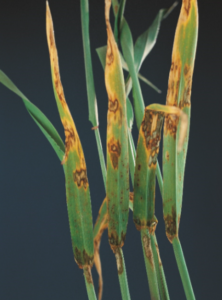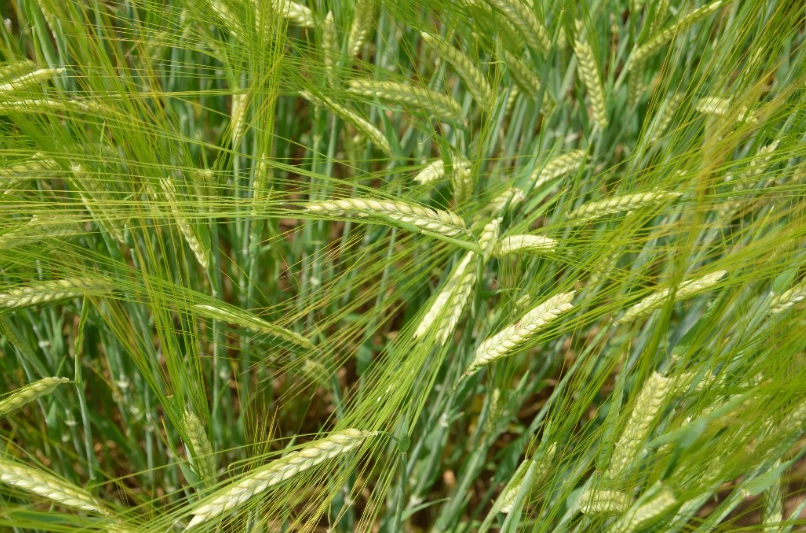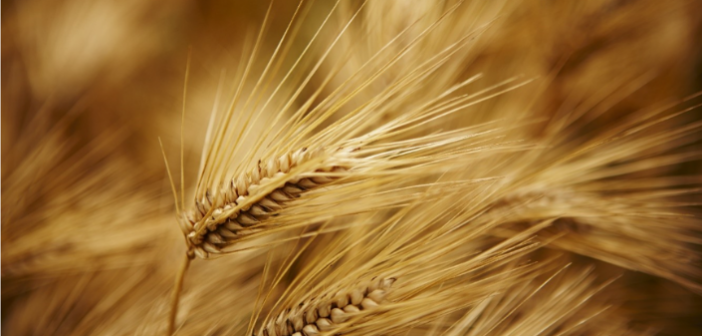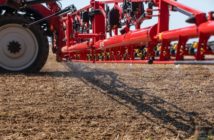A holistic approach will reap rewards when it comes to growing both winter and spring barley. Barley is a delicate crop because it is sink limited, with yield derived from tillers, ear numbers and grain sites/m2. Due to this, barley crops benefit from detailed management from the outset.
Ramularia needs to be a consideration from the day the crop goes into the ground, even though its symptoms are generally not seen until after flowering. Mitigating stress throughout the life of the crop can help delay the onset of Ramularia and allow the crop to fulfil its potential.
David Leahy, Business Development Manager, BASF, said, “Take-all, Barley Yellow Dwarf Virus, trace element deficiencies, damage from plant growth regulators and scorch from late season sprays all have the potential to stress the crop, so growers should try to limit the risk of these stressors as much as possible.
The primary diseases of Rhynchosporium, net blotch, brown rust and mildew can also add to a stress burden placed on the crop so their control can have a positive effect on delaying the onset of Ramularia. Fungicides have a central part to play in managing Ramularia, however, managing this disease does also involve making good agronomic decisions and just being a little bit sensitive towards a delicate crop.
A robust programmed approach to disease control in season will not only benefit yield, it is also the best way to lessen the threat which Ramularia poses.”
Ramularia affects both winter and spring barley and can be spread by trash, although it is largely considered a seed borne disease so there is likely to be Ramularia in the crop almost from the outset. Warm wet growing conditions increase the severity of the disease.
David said, “The first step for resilient disease control would normally be to choose a resistant variety, however, there currently is no genetic resistance to Ramularia.”
Research is ongoing into the lifecycle of this complex disease, and as yet many aspects of this disease are unclear. Researchers think the Ramularia infection grows within the plant, producing toxin, probably in response to plant stress. Initially this causes little ill effect and it is predominantly after flowering, which in itself is regarded as a stress to the plant, that the relationship between the disease and the plant changes and the toxin causes lesions. These lesions reduce the green leaf area affecting yield potential; losses can be as high as 2-2.5 t/ha in winter barley and 1.5 t/ha in the spring crop.
Programmed approach to disease control
T1
In order to retain tillers to create yield and reduce plant stress to manage Ramularia, early disease management is crucial. A T1 application at GS 30-31, controls the primary diseases like, Rhynchosporium, net blotch, brown rust and mildew.

Jenny Deakin, Agronomy Manager BASF, said, “In central areas of England net blotch is probably the more prevalent disease at T1. Further west some areas may well suffer from multiple diseases, depending on varietal choice and all areas can get Ramularia if conditions have been conducive to its development.
F500® (pyraclostrobin) and Xemium® (fluxapyroxad) are the most effective T1 fungicides for the control of Rhynchosporium, net blotch and brown rust.”
Jenny added, “In net blotch we are dealing with many resistance mutations in the population and cannot rely solely on SDHIs to control it. Within that same population there are high levels of the F129L mutation which targets the strobilurins, however, F500® gives good control of F129L. F500 also brings physiological benefits for the plant, including reducing ethylene production in the stem, which reduces stress.
Xemium® is the strongest SDHI on Rhynchosporium, improves straw quality and reduces brackling, ensuring easier harvesting.”
T2
Once yield potential has been created, then the focus has to shift to protecting it. Ramularia control at T2 is very important as secondary disease control is essential to keep the crop photosynthesising and maximising grain yield.

David said, “A T2 application at GS 45, is key for managing Ramularia, fungicide has to be applied well before symptoms are seen; it has to be applied preventatively. If growers can get on at GS45 then it will be a much more protectant scenario. Around the flowering period, the crop is under a different type of stress, a physiological stress, and if we get wet weather at that stage then Ramularia will certainly develop.
Revysol® is the most effective active ingredient on Ramularia as data from the AHDB Fungicide Performance Curves shows. Adding Xemium® at this timing also helps to reduce brackling.”
Scott Milne, Agronomy Manager, BASF, said, “The only watch out is, if you are applying Xemium® at both T1 and T2, then the maximum total dose is 62.5 g/l for malting barley. If the crop is for malting, then the latest timing for Xemium® is GS45.
In Scotland, almost two thirds of the barley crop goes into the malting sector, and so this is the driver for crop management.
In order to achieve the specification for malting, where the grain N or the protein is relatively low, nitrogen applications are limited and that in itself can cause crop stress, so a programmed approach to disease control, with the right products at the right time is necessary to reach yield potential. Although the main effect of Ramularia would be yield loss, it can also have an effect on quality, with increased screenings and poorer quality grain.”
Multi-sites, like folpet and sulphur, have a role to play in Ramularia management. “Multi-sites definitely add to programmes but cannot be solely relied upon as their effects are inconsistent. Ultimately Revysol® is the backbone to delay the onset of Ramularia , giving a very high level of consistency,” added Scott.
Disclaimer
Use plant protection products safely. Always read the label and product information before use. For further product information including warning phrases and symbols refer to www.agricentre.basf.co.uk. Revystar® XE contains Revysol®, Xemium® and F500® are registered Trademarks of BASF. © BASF 2024. All rights reserved.




